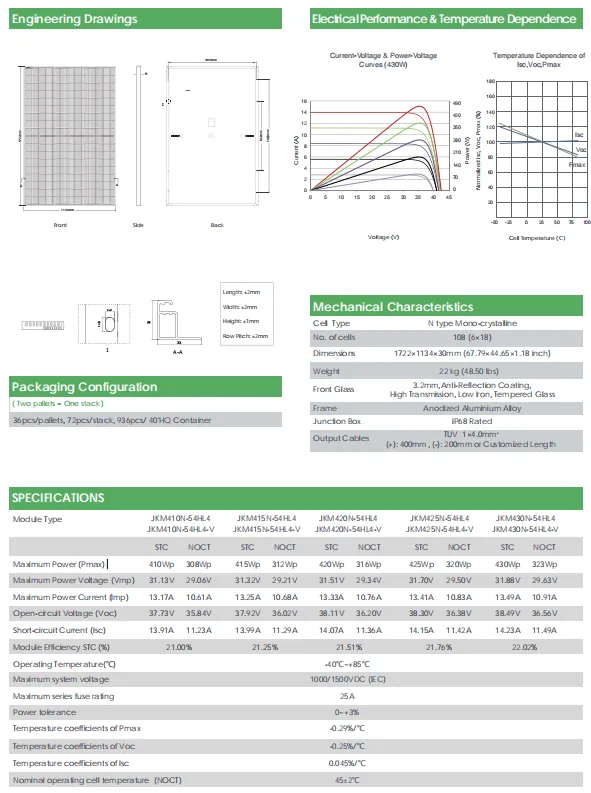Innovative Approaches to Solar Panel Design for Enhanced Energy Efficiency and Sustainability in Modern Applications
The Fundamentals of Solar Panel Design
As the world moves towards sustainable energy solutions, solar power has emerged as one of the most promising sources of renewable energy. Central to harnessing this power are solar panels, which convert sunlight into electricity. Understanding the design of solar panels is critical for optimizing their efficiency and effectiveness. This article explores the key components, principles, and considerations in solar panel design.
1. Components of Solar Panels
At the heart of every solar panel are photovoltaic (PV) cells, which are responsible for converting sunlight into electricity. These cells are typically made from silicon, a material known for its electrical properties. Solar panels usually consist of multiple PV cells connected in series or parallel to achieve the desired voltage and current output.
The structure of a solar panel encompasses several layers. The top layer is usually a glass cover that protects the cells while allowing sunlight to penetrate. Below the glass is an anti-reflective coating that helps maximize light absorption. The cells themselves are sandwiched between a backsheet, usually made of a durable plastic material, and a solar frame, which provides stability and facilitates installation.
2. Types of Solar Panels
There are primarily three types of solar panels Monocrystalline, Polycrystalline, and Thin-Film.
- Monocrystalline Solar Panels are made from a single crystal structure and are known for their high efficiency and longevity. They perform better in low-light conditions and can be identified by their uniform dark color.
- Polycrystalline Solar Panels, on the other hand, are made from multiple crystal structures. They are generally less expensive and slightly less efficient than monocrystalline panels, often showing a bluish hue.
solar panel design

- Thin-Film Solar Panels are made by depositing photovoltaic materials on a substrate. They are lightweight and flexible but tend to have lower efficiency. However, their versatility allows for innovative applications, such as integration into building materials.
The design of solar panels involves a careful balance of various factors, including efficiency, cost, aesthetics, and environmental conditions. One of the primary goals is to maximize the energy output while minimizing materials and production costs. Engineers employ various simulation tools to model and optimize the performance of different designs before manufacturing.
Temperature management is another crucial consideration. Solar panels can lose efficiency in high temperatures, so incorporating cooling solutions or choosing materials that minimize heat absorption can enhance performance. Furthermore, the angle of the panels relative to the sun plays a significant role in maximizing exposure to sunlight. Designs often include adjustable mounts to change the angle throughout the year.
4. Environmental Considerations
Sustainability is a key aspect of solar panel design. Manufacturers are increasingly focusing on using recyclable materials and developing more efficient production processes to reduce the carbon footprint associated with solar panel manufacturing. Additionally, the end-of-life disposal of panels is receiving attention, with efforts to create programs for recycling old solar panels to recover valuable materials.
5. Future Trends in Solar Panel Design
The future of solar panel design holds exciting possibilities. Innovations such as bifacial solar panels, which collect sunlight from both sides, and building-integrated photovoltaics (BIPV), which integrate solar power generation into building structures, are gaining traction. Moreover, ongoing research into materials like perovskite solar cells promises even higher efficiencies at lower costs.
In summary, solar panel design is a multifaceted field that combines engineering, technology, and sustainability. As the demand for clean energy solutions grows, the importance of effective solar panel design will only increase. By continuing to innovate and improve the efficiency and aesthetics of solar panels, we can make solar energy a cornerstone of our global energy strategy.
-
String Solar Inverter: The High-Efficiency Solution for Smart Solar EnergyNewsJul.14,2025
-
Revolutionizing Rooftop Energy with the Power of the Micro Solar InverterNewsJul.14,2025
-
Power Independence with Smart Off Grid Solar Inverter SolutionsNewsJul.14,2025
-
On Grid Solar Inverter: Powering the Future with Smart Grid IntegrationNewsJul.14,2025
-
Monocrystalline Solar Panels: High-Efficiency Power for the Future of Clean EnergyNewsJul.14,2025
-
Bifacial Solar Panel: A Smarter Investment for Next-Generation Energy SystemsNewsJul.14,2025







